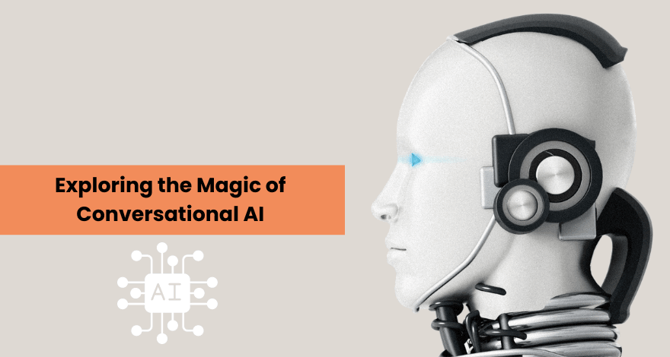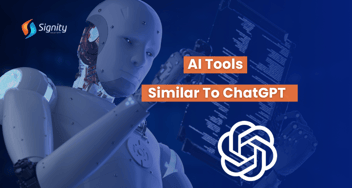Exploring the Power of Conversational AI
Dive into the world of Conversational AI—an advanced technology where machines grasp, process, and generate human-like language. From helping customers to making tasks easier, AI is like having a smart helper. Learn how it works and why it's so cool!

Step into the realm of Conversational AI—an extraordinary form of artificial intelligence that empowers computers to comprehend, process, and generate human language. Revolutionizing our interactions with machines, it facilitates lifelike conversations fueled by the dynamic synergy of Natural Language Processing (NLP) and Machine Learning (ML).
This Article explores the technical underpinnings of conversational AI with a focus on Python as the primary language for its development.
Components of Conversational AI
Conversational AI blends NLP with ML, creating a dynamic synergy. This constant interaction between NLP and ML results in the enhancement of AI algorithms. Conversational AI comprises core elements that enable it to naturally process, comprehend, and generate responses in human-like ways. It encompasses various components, including:
Machine Learning (ML):
It is a subfield of artificial intelligence, made up of a set of algorithms, features, and data sets that continuously improve themselves with experience. As the input grows, the AI platform machine gets better at recognizing patterns and uses it to make predictions.
Natural language processing:
NLP is the current method of analyzing language with the help of machine learning used in conversational AI. Before machine learning, the evolution of language processing methodologies went from linguistics to computational linguistics to statistical natural language processing. In the future, deep learning will advance the natural language processing capabilities of conversational AI even further.
NLP consists of four steps: Input generation, input analysis, output generation, and reinforcement learning.
Unstructured data is transformed into a format that can be read by a computer, which is then analyzed to generate an appropriate response. Underlying ML algorithms improve response quality over time as it learns. These four NLP steps can be broken down further below:
- Input generation: Users provide input through a website or an app; the format of the input can either be voice or text.
- Input analysis: If the input is text-based, the conversational AI solution app will use natural language understanding (NLU) to decipher the meaning of the input and derive its intention. However, if the input is speech-based, it’ll leverage a combination of automatic speech recognition (ASR) and NLU to analyze the data.
- Dialogue management: During this stage, Natural Language Generation (NLG), a component of NLP, formulates a response.
- Reinforcement learning: Finally, machine learning algorithms refine responses over time to ensure accuracy.
Conversational AI Use Cases
Conversational artificial intelligence, often linked with online chatbots and voice assistants, plays a crucial role in customer support services across various channels. These applications, including the Conversational AI solution, boast robust analytics, ensuring immersive conversational experiences.
Most current conversational AI implementations fall under the category of weak AI, excelling in specific tasks but lacking human-level consciousness. The pursuit of strong AI, a theoretical concept targeting human-like cognitive abilities, remains ongoing.
Despite its narrow focus, conversational AI is a valuable technology for enterprises, enhancing profitability. While AI chatbots are prevalent, other enterprise use cases include:
- Online Customer Support: Chatbots are replacing human agents, answering FAQs, providing personalized advice, and enhancing customer engagement on websites and social media platforms.
- Accessibility: Conversational AI breaks down entry barriers, particularly for users with assistive needs, through text-to-speech dictation and language translation.
- HR Processes: Streamlining HR tasks such as employee training, onboarding, and data updates.
- Healthcare: Making healthcare services more accessible and efficient, including administrative tasks like claim processing.
- IoT Devices: Devices like Alexa, Siri, and Google Home leverage automated speech recognition for user interactions.
- Computer Software: Simplifying office tasks, such as search autocomplete and spell check. Although current AI chatbots have limited problem-solving abilities, they enhance efficiency and cost-effectiveness in repetitive customer interactions. This, in turn, frees up personnel resources for more complex customer engagements, leading to higher customer satisfaction.
Benefits of Conversational AI
Conversational AI is a cost-efficient solution for many business processes. The following are examples of the benefits of using conversational AI.
Enhancing Cost Efficiency:
Operating a customer service department can be a substantial expense, particularly when catering to inquiries beyond regular office hours. Leveraging conversational interfaces can yield cost savings by reducing expenditures on staffing and training, a particularly advantageous proposition for smaller or medium-sized businesses. Chatbots and virtual assistants offer instantaneous responses, ensuring round-the-clock availability to potential customers.
Furthermore, human interactions often result in inconsistent responses to customer inquiries. Given that most support interactions involve information retrieval and repetitive tasks, businesses can program conversational AI to adeptly manage a wide array of scenarios, thereby ensuring comprehensive and consistent support. This continuity in customer experiences allows valuable human resources to be allocated to more intricate queries.
Boosted Sales and Customer Engagement:
The ubiquitous presence of mobile devices in consumers' daily lives necessitates businesses to provide real-time information promptly. Conversational AI tools offer a more readily accessible means of engagement compared to human workforces.
Customers can interact swiftly and frequently with brands, evading protracted call center wait times, and ultimately enhancing the overall customer experience. Elevated customer satisfaction, in turn, translates into increased customer loyalty and additional revenue through referrals.
The personalization capabilities inherent in conversational AI empower chatbots to make tailored recommendations to end users, enabling businesses to cross-sell products that customers may not have initially considered.
Seamless Scalability:
Conversational AI exhibits remarkable scalability attributes. Expanding the infrastructure to support conversational AI is a cost-effective and expeditious process compared to the hiring and onboarding procedures associated with new employees.
This scalability proves especially advantageous during product expansions into new geographical markets or when confronted with unexpected surges in demand, such as during holiday seasons.
Python and Conversational AI
Python is a versatile and widely used programming language that is well-suited for building Conversational AI systems. Here's how Python is leveraged in the technical implementation of Conversational AI:
NLP Libraries:
Python boasts a rich ecosystem of NLP libraries and frameworks, such as NLTK, spaCy, and Transformers (using Hugging Face's Transformers library). These libraries simplify tasks like tokenization, part-of-speech tagging, and entity recognition.
Machine Learning Models:
Python's machine learning libraries like scikit-learn and TensorFlow enable the training and deployment of machine learning models for intent recognition, sentiment analysis, and other NLP tasks.
Web Frameworks:
Python web frameworks like Flask and Django are used to create web servers and application endpoints for handling user requests and delivering responses.
Scalability:
Python applications can be deployed and scaled using various cloud platforms and containerization technologies, making it suitable for handling increased user demand.
Third-party Integrations:
Python's extensive library ecosystem facilitates integration with external services and APIs, allowing AI systems to access knowledge bases or perform tasks like language translation.
Conclusion
In conclusion, the landscape of human-technology interactions has been profoundly reshaped by the advent of Conversational AI, and Python stands as a pivotal enabler in its technical realization.
Python's wealth of Natural Language Processing (NLP) libraries, machine learning frameworks, web development capabilities, scalability options, and integration versatility bestow upon it a formidable stature in the creation of Conversational AI systems.
Empower Your Innovation Journey with AI
From concept to deployment, we bring your vision to life through advanced AI development. Reach out to our experts to discuss your project!
As the realm of Conversational AI evolves with relentless innovation, Python's adaptability and robust ecosystem firmly establish it as an indispensable language for the cultivation of intelligent systems that facilitate authentic and immersive dialogues with machines.
Mastery of the technical intricacies underlying Conversational AI, alongside Python's indispensable role, is imperative for unlocking the boundless potential inherent in this transformative technological frontier.













